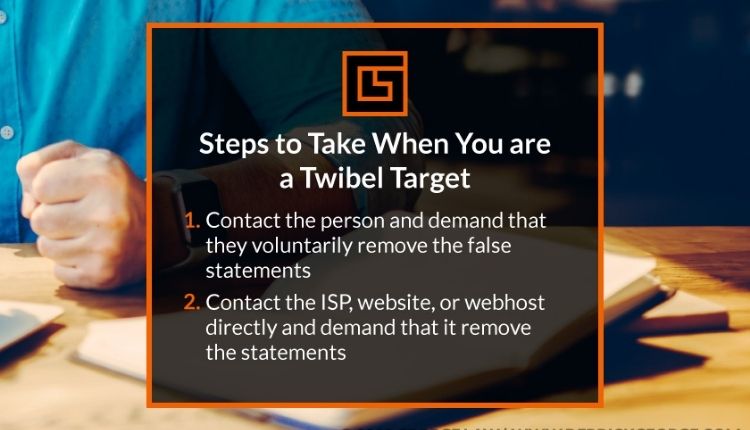Slanderous online material can cause significant damage to your reputation and emotional well-being. It spreads quickly and is difficult to remove once it’s out there. However, there are techniques you can use to suppress and manage slanderous content online. This guide will help you understand how to address these issues effectively.
Understanding Slanderous Online Material
Slander involves making false spoken statements that damage someone’s reputation. Online, slanderous material can appear in comments, reviews, forums, and social media posts. The internet allows such content to spread rapidly, reaching a wide audience and causing substantial harm.
A 2021 survey found that 22% of Americans have experienced online defamation. This statistic highlights the prevalence of the problem and the importance of knowing how to combat it.
Document the Slander
Collect Evidence
Before taking any action, document the slanderous content. Take screenshots, note the URLs, and record the dates and times you discovered the material. This evidence is crucial if you need to report the behavior to the platform or pursue legal action.
Context Matters
Ensure you capture the entire context of the slanderous statements, including any related comments or posts. This can help demonstrate the intent and impact of the slander when you report it or use it as evidence in a legal case.
Reporting to Platforms
Use Reporting Tools
Most online platforms have tools for reporting slanderous content. For example, on Facebook, you can report a post by clicking the three dots in the top right corner and selecting “Find support or report post.” Follow the prompts to explain why the content is slanderous.
Persistent Follow-Up
If your initial report does not lead to the removal of the content, follow up with the platform. Be persistent and provide additional evidence if necessary. Platforms are more likely to act when they receive comprehensive and detailed reports.
Search Engine Optimization (SEO) Techniques
Create Positive Content
One effective way to suppress slanderous material is by creating positive content that highlights your achievements, skills, and positive attributes. This can include blog posts, articles, social media updates, and other content that showcases your strengths.
Optimize Positive Content
Use SEO techniques to ensure that your positive content ranks higher in search engine results than the slanderous material. This includes using relevant keywords, creating high-quality content, and building backlinks from reputable sites.
Legal Actions
Cease and Desist Letter
A cease and desist letter is a formal request to stop defamatory behavior. A lawyer can help you draft and send this letter to the person responsible for the slander. The letter should clearly outline the defamatory statements, explain why they are false, and demand that the content be removed.
File a Defamation Lawsuit
If the cease and desist letter does not resolve the issue, you may need to file a defamation lawsuit. Consult with a lawyer who specializes in defamation cases to understand your options and the likelihood of success. The lawsuit will require you to present all the documented evidence, demonstrate harm, and prove fault.
Injunctions
An injunction is a court order that requires the defendant to stop making defamatory statements and to remove existing defamatory content. Injunctions are typically sought in conjunction with a defamation lawsuit. If granted, an injunction provides legal backing to ensure that the slanderous content is removed and not reposted.
Professional Reputation Management Services
Hiring Experts
Reputation management services specialize in dealing with online slander and defamation. They have the expertise and tools to help you manage your online presence and suppress negative content. These services can be particularly useful for handling difficult cases, such as ripoff report removal.
Comprehensive Strategies
These services often employ a comprehensive approach, including creating positive content, optimizing it for search engines, and using legal avenues when necessary. By addressing the problem from multiple angles, they can effectively suppress slanderous material.
Preventative Measures
Monitor Your Online Presence
Regularly monitoring your online presence can help you quickly identify slanderous statements. Set up Google Alerts for your name and other relevant keywords to receive notifications when new content is posted. This way, you can address issues before they spread widely.
Protect Your Privacy
Adjust your privacy settings on social media to control who can see and interact with your posts. Be cautious about sharing personal information that could be used against you. By managing your online presence, you can reduce the risk of becoming a target for slander.
Supporting Others
Offer Emotional Support
If you know someone dealing with online slander, offer your support. Listen to their concerns, provide encouragement, and help them navigate the steps to address the slander. Emotional support can be invaluable during such stressful times.
Advocate for Fairness
Stand up for those who are being unfairly slandered. If you know the accusations are false, speak up and provide evidence to support their case. Your support can help mitigate the damage to their reputation.
Conclusion
Suppressing slanderous online material requires a proactive and multifaceted approach. By documenting the slander, reporting it to platforms, using SEO techniques, taking legal action, and considering professional reputation management services, you can effectively combat and manage online slander. Preventative measures, such as monitoring your online presence and protecting your privacy, can help reduce the risk of slander. Supporting others who are affected and advocating for fairness can also make a significant difference. With persistence and the right strategies, you can protect your reputation and overcome the challenges posed by online slander.
